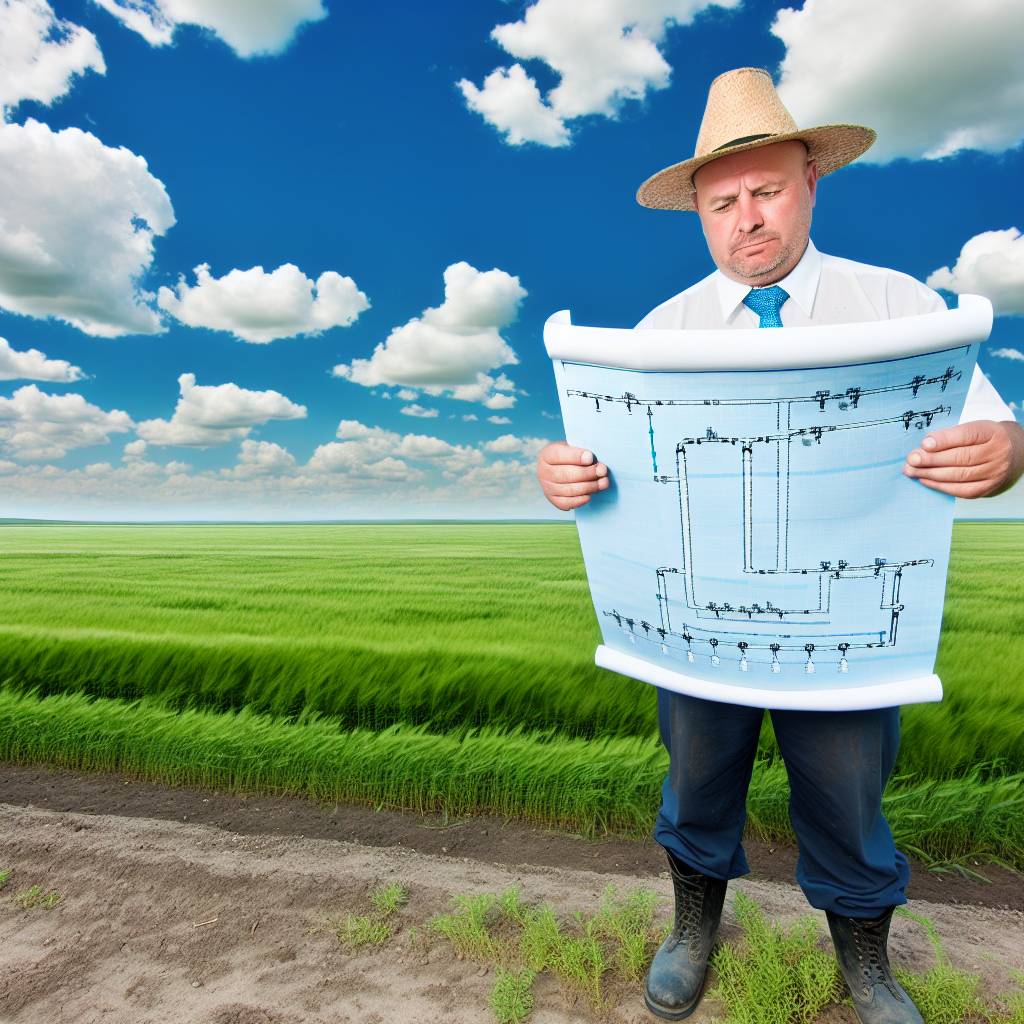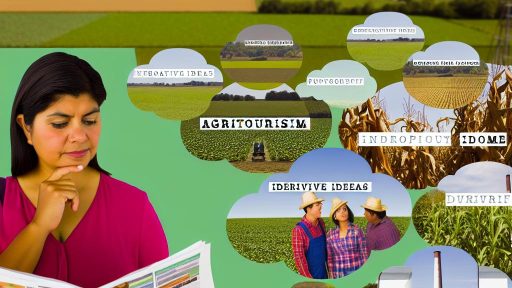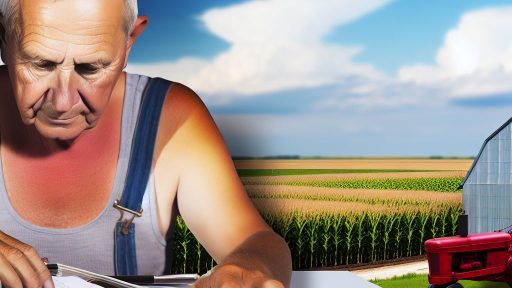Introduction to Water Scarcity and the Need for Conservation
Water scarcity affects millions of people worldwide.
This issue poses significant challenges for agriculture and ecosystems.
As populations grow, the demand for freshwater increases.
Climate change further exacerbates these challenges.
Consequently, innovative irrigation techniques become essential.
Water conservation plays a crucial role in sustainability.
Understanding the current state of water resources is vital.
Many regions experience severe droughts regularly.
Moreover, inefficient water usage in farming aggravates scarcity.
Farmers must adopt smarter irrigation methods to optimize usage.
Implementing these methods can lead to significant water savings.
Furthermore, conserving water supports healthier ecosystems.
Effective management of water resources is crucial for food security.
Hence, we must explore the various innovative irrigation techniques.
Overview of Innovative Irrigation Techniques
Importance of Water Conservation
Water conservation plays a vital role in sustainable agriculture.
Transform Your Agribusiness
Unlock your farm's potential with expert advice tailored to your needs. Get actionable steps that drive real results.
Get StartedIt helps maintain healthy ecosystems and safe drinking water supplies.
Moreover, efficient irrigation techniques minimize wastage and increase yields.
Drip Irrigation Systems
Drip irrigation delivers water directly to the plant’s roots.
This method reduces evaporation and runoff significantly.
Farmers can achieve higher efficiency rates with minimal water use.
For instance, GreenTech Farms successfully implemented this system, boosting their crop yields by 30%.
Smart Irrigation Technology
Smart irrigation leverages technology to optimize water use.
Using sensors, farmers can monitor soil moisture levels accurately.
These systems adjust water supply automatically based on real-time data.
Consequently, this reduces both water and labor costs.
Rainwater Harvesting
Rainwater harvesting is another innovative technique.
This method involves collecting and storing rainwater for irrigation.
It helps utilize naturally available resources efficiently.
Harvested rainwater can supplement traditional water sources, reducing dependency.
Subsurface Irrigation
Subsurface irrigation involves burying irrigation lines underground.
This technique minimizes evaporation and prevents weed growth.
It allows for consistent soil moisture levels, improving plant health.
Agricultural enterprises like AquaRoots have adopted this approach with great success.
Time-based Irrigation Scheduling
Time-based irrigation scheduling optimizes watering times and durations.
This method factors in weather forecasts and plant requirements.
As a result, it reduces unnecessary water usage during rainy periods.
Farmers using this method report significant savings in water resources.
Enhancing Sustainability Through Innovative Irrigation
Exploring innovative irrigation techniques is crucial for sustainability.
Adopting these methods can significantly enhance water conservation efforts.
Showcase Your Farming Business
Publish your professional farming services profile on our blog for a one-time fee of $200 and reach a dedicated audience of farmers and agribusiness owners.
Publish Your ProfileThese practices ensure a secure future for agriculture and ecosystems alike.
Drip Irrigation: Efficiency and Benefits
Overview of Drip Irrigation
Drip irrigation delivers water directly to the plant’s roots.
This method minimizes evaporation and runoff.
It uses a system of pipes, valves, and emitters.
Farmers have adopted drip irrigation globally.
Efficiency in Water Usage
Drip irrigation conserves water effectively.
It can reduce water usage by up to 60% compared to traditional methods.
Moreover, it allows precise control over water application.
This accuracy minimizes waste and optimizes plant growth.
Benefits to Crop Productivity
Drip irrigation enhances crop yields significantly.
Plants receive consistent moisture, leading to better growth.
Furthermore, this method reduces the risk of disease.
Healthy plants contribute to higher quality produce.
Cost-Effectiveness and Long-Term Savings
Initially, installation costs may seem high.
However, farmers save money in the long run.
Water savings translate into lower utility bills.
Additionally, reduced labor costs benefit farmers economically.
Environmental Benefits
Drip irrigation minimizes resource consumption.
It significantly reduces chemical runoff into local water sources.
This method also decreases soil erosion effectively.
Farmers contribute to sustainable agriculture through drip irrigation.
Innovation and Technology Integration
Recent innovations have improved drip irrigation systems.
Smart technology monitors soil moisture levels.
This system automates watering schedules for efficiency.
Farmers can easily track water usage through mobile apps.
Discover More: Reducing Transportation Costs In Agribusiness
Smart Irrigation Systems: Using Technology for Optimal Water Use
Introduction to Smart Irrigation Systems
Smart irrigation systems utilize technology to conserve water effectively.
These systems adapt their watering schedules based on weather conditions.
Eventually, they enhance plant health and reduce water waste.
Types of Smart Irrigation Technologies
Several technologies define smart irrigation systems.
Soil moisture sensors help assess the water content in the soil.
Evapotranspiration controllers determine the amount of water needed.
Weather-based irrigation controllers can adjust schedules automatically.
- Drip irrigation systems target water directly to plant roots.
- Sprinkler systems can be integrated with smart controllers.
Benefits of Smart Irrigation Systems
Smart irrigation systems offer numerous advantages for water conservation.
They significantly reduce water usage through precise irrigation methods.
Moreover, these systems improve crop yields and overall garden health.
In addition, they save time and labor costs for farmers and gardeners.
Challenges and Considerations
While smart irrigation systems are beneficial, some challenges exist.
Initial installation costs can be prohibitive for some users.
Additionally, proper maintenance is crucial to ensure optimal performance.
Showcase Your Farming Business
Publish your professional farming services profile on our blog for a one-time fee of $200 and reach a dedicated audience of farmers and agribusiness owners.
Publish Your ProfileEducation on using these systems effectively is also necessary.
Case Studies of Successful Implementations
Various organizations have successfully implemented smart irrigation systems.
For instance, GreenFields Farm reduced water usage by 30% using sensors.
Similarly, the city of Rivertown upgraded its parks with smart controllers.
- These upgrades led to healthier landscapes and cost savings.
- Agricultural cooperatives report increased crop quality and yields.
You Might Also Like: Enhancing Inventory Management for Online Farming
Rainwater Harvesting Techniques and Their Impact
Overview of Rainwater Harvesting
Rainwater harvesting involves collecting and storing rainwater for useful purposes.
This technique helps reduce dependence on conventional water supplies.
Moreover, it promotes sustainable water management practices.
Methods of Collecting Rainwater
Various methods exist for collecting rainwater effectively.
First, the use of rain barrels is common among homeowners.
These barrels capture runoff from roofs during rainfall.
Similarly, cisterns offer a more extensive storage solution.
They can store larger quantities of water for longer periods.
Benefits of Rainwater Harvesting
Rainwater harvesting offers numerous environmental and economic benefits.
It aids in reducing stormwater runoff, mitigating flood risks.
Additionally, it lowers water bills significantly for households.
This practice also enhances drought resilience in various regions.
Implementing a Rainwater Harvesting System
Establishing a rainwater harvesting system requires careful planning.
Firstly, assess the appropriate collection area such as roofs.
Next, choose suitable storage containers or tanks.
Ensure proper filtration systems are in place for clean water.
Finally, consider local regulations regarding rainwater use.
Case Studies of Successful Implementation
Several communities worldwide have successfully implemented rainwater harvesting.
The city of Cape Town, South Africa, made significant strides in this area.
They developed programs to encourage residential rainwater collection.
As a result, they managed to conserve water amid drought conditions.
Similarly, Australia has established extensive rainwater harvesting initiatives.
Challenges and Considerations
Despite the benefits, rainwater harvesting presents some challenges.
One challenge includes the initial setup costs for systems.
Maintenance also requires regular effort to ensure water quality.
Furthermore, some regions face legal restrictions on collection.
Future of Rainwater Harvesting
As water scarcity becomes increasingly common, rainwater harvesting gains importance.
Innovative technology continues to enhance its efficiency and appeal.
Additionally, public awareness campaigns can educate communities about its benefits.
Ultimately, rainwater harvesting represents a vital step toward sustainable water use.
Uncover the Details: Waste Reduction Methods In Farming Operations

Sustainable Practices: Soil Moisture Management Strategies
Importance of Soil Moisture Management
Soil moisture management is essential for sustainable agriculture.
Proper soil moisture levels boost crop yields and quality.
Additionally, it conserves water resources and enhances soil health.
Techniques for Managing Soil Moisture
There are several effective techniques for managing soil moisture.
Showcase Your Farming Business
Publish your professional farming services profile on our blog for a one-time fee of $200 and reach a dedicated audience of farmers and agribusiness owners.
Publish Your ProfileOne popular method is using mulches to retain moisture.
Mulching reduces soil evaporation and regulates temperature.
Another technique involves implementing cover crops during the off-season.
Cover crops improve soil structure and moisture retention.
Using Drip Irrigation
Drip irrigation efficiently delivers water to plants near their roots.
This system minimizes water loss due to evaporation and runoff.
Moreover, it reduces weed growth by keeping the surrounding soil dry.
Implementing Rainwater Harvesting
This method can significantly reduce water costs for farmers.
Furthermore, it provides a sustainable water source during dry seasons.
Monitoring Soil Moisture Levels
Regular monitoring of soil moisture is crucial for effective management.
Technologies like moisture sensors can provide real-time data.
Farmers can adjust their irrigation practices based on this information.
By analyzing moisture levels, they can prevent over- or under-watering.
Benefits of Effective Soil Moisture Management
Effective soil moisture management leads to healthier crops.
It also results in reduced irrigation costs over time.
Additionally, this practice contributes to sustainable agriculture practices.
As a result, it benefits both farmers and the environment.
Delve into the Subject: Implementing Agritourism to Diversify Farm Income
Case Studies of Successful Water-Conserving Irrigation Projects
Innovative Solutions in California
California faces significant water scarcity challenges.
Farmers utilize advanced drip irrigation systems.
This change conserves water while enhancing crop yield.
One notable example is the work of GreenTech Agriculture.
They implemented precision irrigation on a large scale.
As a result, they reduced water usage by 30%.
This approach has set a benchmark for sustainable farming.
Success Stories from Israel
Israel is a leader in water-saving irrigation techniques.
The country developed efficient technologies to combat drought.
They popularized the use of drip irrigation globally.
For instance, the Israeli company Netafim pioneered this method.
Their systems now irrigate farms in over 110 countries.
This technology can save up to 50% more water than traditional methods.
Projects in Australia’s Outback
Australia faces unique challenges due to climate extremes.
In response, farmers are adopting soil moisture monitoring systems.
These devices ensure optimal irrigation timing.
For example, CropSmart implemented this technology in various regions.
The results showed a 40% increase in water efficiency.
This improvement supports sustainability amid harsh conditions.
Community Initiatives in India
Indian farmers are increasingly aware of water conservation.
Many communities banded together to implement micro-irrigation systems.
Showcase Your Farming Business
Publish your professional farming services profile on our blog for a one-time fee of $200 and reach a dedicated audience of farmers and agribusiness owners.
Publish Your ProfileOne successful initiative is the “Rainfed Agriculture Project.”
This project enhances water use efficiency in rural areas.
Farmers report improved crop yields and reduced water waste.
These cooperative efforts highlight community resilience and innovation.
Academic Research Supporting Innovations
Research institutions are crucial in advancing irrigation technology.
The University of Florida conducts extensive studies on drought-resistant crops.
They focus on integrating smart irrigation solutions with crop management.
Findings show that data-driven decisions significantly improve outcomes.
This research fosters advancements in agriculture worldwide.
Future Trends in Irrigation Technologies for Sustainable Agriculture
Smart Irrigation Systems
Smart irrigation systems use advanced technology to optimize water usage.
These systems utilize sensors that monitor soil moisture levels.
Data collected helps farmers make informed decisions about watering schedules.
This approach minimizes water waste, promoting conservation.
Drip Irrigation Innovations
Drip irrigation has evolved significantly in recent years.
New technologies create more efficient and precise delivery methods.
Micro-irrigation techniques target the root zone of plants directly.
This method reduces evaporative losses and enhances crop yield.
Rainwater Harvesting Systems
Rainwater harvesting is gaining traction within sustainable agriculture.
Farmers are capturing and utilizing runoff water effectively.
This practice reduces reliance on traditional water sources.
Additionally, it contributes to improved soil health.
Climate-Responsive Irrigation
Climate-responsive irrigation adapts to changing weather patterns.
Farmers can adjust their irrigation strategies based on real-time data.
This flexibility reduces water usage during dry periods.
Moreover, it minimizes excess watering during wetter seasons.
Mobile Irrigation Management
Mobile apps are transforming irrigation management for farmers.
These applications provide vital information at farmers’ fingertips.
Farmers can monitor their fields remotely and adjust systems instantly.
This innovation enhances productivity while promoting efficient water use.
Drone Technology in Irrigation
Drones are revolutionizing agricultural practices, including irrigation.
They offer aerial imagery, enabling precise field assessments.
This technology helps identify moisture-deficient areas quickly.
As a result, farmers can target irrigation efforts more effectively.
Additional Resources
USDA Announces Investments for Tribal Communities and Acequias …
Biden-Harris Administration Invests Up to $400 Million to Address …




